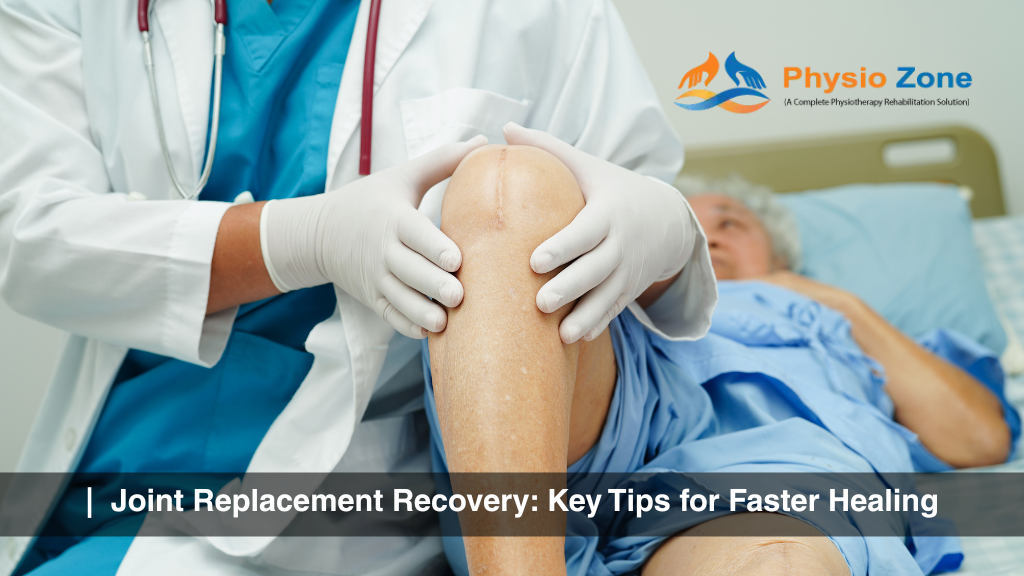Undergoing a joint replacement surgery is a significant step toward a pain-free and more active life. However, the road to full recovery can be challenging and requires patience, care, and dedication. Whether you’re recovering from a knee, hip, or shoulder replacement, understanding the healing process and adopting the right recovery strategies will help ensure a smoother and faster recovery. In this article, we’ll explore essential tips and insights for your joint replacement recovery journey.
Healing Process After Joint Replacement
Recovery from joint replacement surgery varies from person to person, but there are common stages that most patients experience. Immediately after surgery, patients are monitored in a hospital setting to manage pain and ensure there are no complications. In the following weeks, physical therapy and at-home care are crucial to regaining strength and mobility.
The healing process typically involves:
- Initial Rest and Recovery: The first few days after surgery are critical. You’ll likely use crutches or a walker to avoid putting too much weight on the joint. Swelling and discomfort are common during this period, but rest and elevation will help.
- Gradual Return to Movement: As healing progresses, your physical therapist will guide you through exercises designed to strengthen muscles and improve joint mobility.
- Long-Term Rehabilitation: Over the course of several months, you’ll work on regaining full function and strength in the joint.
The Importance of Rest and Elevation in Recovery
Rest and elevation are fundamental during the initial stages of joint replacement recovery. Proper rest allows your body to heal and reduces the risk of complications such as blood clots and infections. Elevating the affected limb helps manage swelling and encourages proper circulation, which is essential for faster healing.
The Role of Physical Therapy in Faster Recovery
Physical therapy is a cornerstone of the recovery process. A well-structured rehabilitation plan will help:
- Restore Range of Motion: After surgery, it’s essential to regain flexibility and movement in the affected joint.
- Strengthen Surrounding Muscles: Physical therapy helps rebuild strength in muscles that support the joint, reducing strain on the newly replaced joint.
- Prevent Stiffness: Regular therapy sessions prevent stiffness and ensure you’re moving in a healthy way.
Pain Management Tips for a Smoother Recovery Journey
Managing pain effectively is essential for a smooth recovery. While some pain after surgery is expected, there are several methods to minimize discomfort:
- Medications: Your doctor may prescribe pain relievers or recommend over-the-counter medications. Be sure to follow their guidance regarding dosages and frequency.
- Ice and Heat Therapy: Ice packs can help reduce swelling and numb the area, while heat can relax muscles and alleviate tension.
- Rest and Relaxation: Stress can exacerbate pain, so make sure to get plenty of rest, both physically and mentally.
How to Create a Comfortable Home Environment Post-Surgery
Creating a comfortable, safe, and convenient home environment can make your recovery process much easier. Consider the following tips:
- Ensure Accessibility: Place frequently used items within easy reach to avoid unnecessary bending or stretching.
- Create a Safe Environment: Clear any obstacles that may cause you to trip or fall. Use grab bars in the bathroom and handrails in hallways.
- Comfortable Seating: Arrange comfortable chairs with good back support, and use pillows or cushions to elevate the leg.
How to Stay Positive During Your Recovery
Staying positive during recovery can significantly impact your overall well-being. Recovery can be slow at times, but focusing on small achievements—like taking a few steps without assistance or reducing pain levels—can boost your mood and motivation. It’s important to have a support system of family, friends, or even an online community of fellow patients who understand what you’re going through.
When to Call Your Doctor: Signs You Need Help
While recovery is generally smooth, there are signs that indicate you should reach out to your doctor immediately:
- Increased pain: If pain becomes unbearable or doesn’t improve with prescribed methods
- Swelling or redness: Severe swelling or redness, especially if it doesn’t subside after elevating the leg or applying ice, could indicate an infection.
- Fever: A fever above 101°F (38.3°C) could be a sign of infection.
- Unexpected changes in movement: If you notice sudden stiffness or loss of range of motion, consult your doctor.
Managing Swelling and Stiffness After Surgery
Swelling and stiffness are common after joint replacement surgery, but they can be managed effectively with a few simple practices:
- Elevation and Ice: Regularly elevating your leg and applying ice can reduce swelling.
- Compression Garments: Compression socks or sleeves may help reduce swelling, especially in the early days after surgery.
- Gentle Movement: Gradual movement and stretching exercises can help combat stiffness. Make sure to follow your physical therapist’s advice.
Real Stories: Personal Experiences with Joint Replacement Recovery
Hearing real stories can be encouraging during your recovery journey. Many people who have undergone joint replacement surgery share similar experiences of challenges and triumphs. They often emphasize the importance of staying committed to physical therapy, managing pain proactively, and maintaining a positive outlook.
Frequently Asked Questions (FAQs)
How long does recovery take after joint replacement surgery?
Recovery time can vary, but most patients can expect to regain full function within 6 months to a year, depending on the type of joint replacement and individual factors.
Is pain normal after joint replacement surgery?
Some pain is to be expected in the early stages, but it should gradually improve. Consult your doctor if pain worsens or doesn’t improve with prescribed treatments.
What should I do if I feel excessive pain during physical therapy?
Inform your physical therapist immediately. They can adjust your exercises or suggest alternative methods to reduce pain while continuing your rehabilitation.
Can I drive after joint replacement surgery?
Most people can resume driving after about 6 weeks, but it depends on your progress and which joint was replaced.
How can I reduce swelling after surgery?
Elevate your leg above heart level, apply ice regularly, and follow your doctor’s instructions regarding compression garments.
Is it safe to exercise after joint replacement?
Yes, physical activity is essential, but it’s important to follow the exercise plan prescribed by your physical therapist to avoid overexertion.
When can I return to work after joint replacement surgery?
This depends on your job and how your recovery progresses. Most people can return to work within 6 to 12 weeks.
What should I avoid during my recovery?
Avoid overexerting yourself, engaging in high-impact activities, or making sudden movements that could strain the healing joint.
How can I stay motivated during recovery?
Celebrate small victories, stay connected with loved ones, and remember that each day is a step closer to full recovery.
How do I know if something is wrong during my recovery?
If you experience signs like severe pain, unusual swelling, fever, or difficulty moving the joint, contact your doctor immediately.
Conclusion
Joint replacement recovery is a journey that requires time, effort, and patience. By following these key recovery tips, staying positive, and taking good care of your body, you can achieve a successful and speedy recovery. Always remember to listen to your body, work closely with your healthcare team, and take one step at a time toward a pain-free and active lifestyle.

